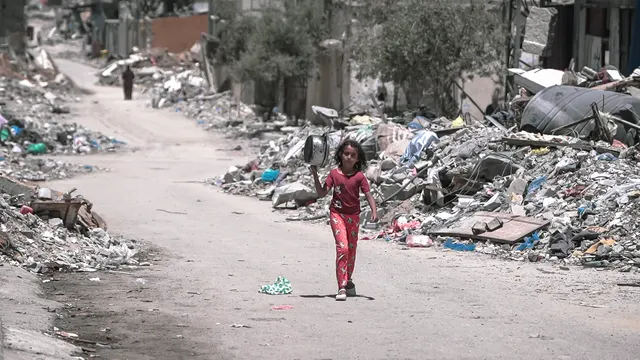Image by Jaber Jehad Badwan, licensed under CC BY-SA 4.0.
Original image via Wikimedia Commons.
Gaza, July 26, 2025 – The skies above Gaza have become a symbol of urgency, as aid packages fall from planes in a last-ditch effort to reach starving civilians. But behind the dramatic footage lies a harsh truth: air-dropping aid, while emotionally powerful, is a deeply flawed and desperate tactic that won’t solve the hunger crisis unfolding on the ground.
Looks Heroic, Feeds Few
From a distance, dropping aid by air might seem like heroism in action, planes soaring above, parachutes floating down, boxes packed with food and hope. But in reality, it’s a logistical nightmare that barely scratches the surface of the problem. The amount of aid delivered by air is minuscule compared to what’s needed. It’s like offering a drop of water to a burning forest.
Worse, it’s chaotic. Without proper distribution systems on the ground, these packages often land in random areas, sparking panic, stampedes, and conflict among desperate civilians.
The Real Crisis Is on the Ground
The people of Gaza aren’t just hungry, they’re on the brink of famine. Families are surviving on scraps, parents are skipping meals so their children can eat, and children are showing visible signs of severe malnutrition. In this context, air drops aren’t relief, they’re a reminder of how broken the current aid response truly is.
What’s desperately needed is a steady, large-scale supply of food, water, and medical aid delivered safely by land. But access remains heavily restricted, and until that changes, no amount of airborne boxes will make a meaningful dent.
Aid With Dignity, Not Drama
Here’s the thing: humanitarian aid should offer dignity, not chaos. It should be structured, efficient, and reliable. Air-dropping aid is none of those things. It’s a reaction, not a strategy. A spectacle, not a solution.
Many on the ground feel that this method sends a message, not just of desperation, but of abandonment. That the world is willing to send food from the sky, but not willing to take the steps required to make sure it reaches those who need it most.
What Needs to Happen
If hunger in Gaza is going to end, the world must shift its focus from symbolic gestures to real solutions. That means opening land routes, ensuring safe access for aid workers, and pressuring all sides to allow humanitarian convoys through.
It also means listening to the voices of those affected, who have been clear: they don’t need more parachutes. They need protection, stability, and consistent aid delivered with care.
In short: dropping food from planes might make for powerful headlines, but it’s no match for what Gaza truly needs. Hunger can’t be solved from 10,000 feet.


